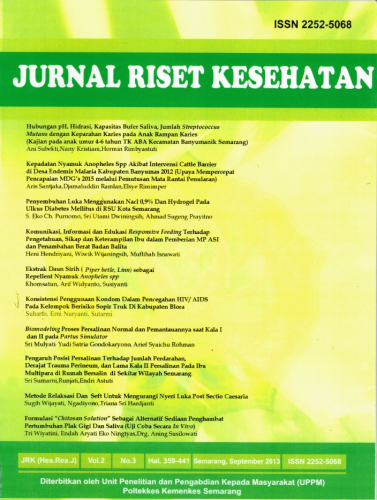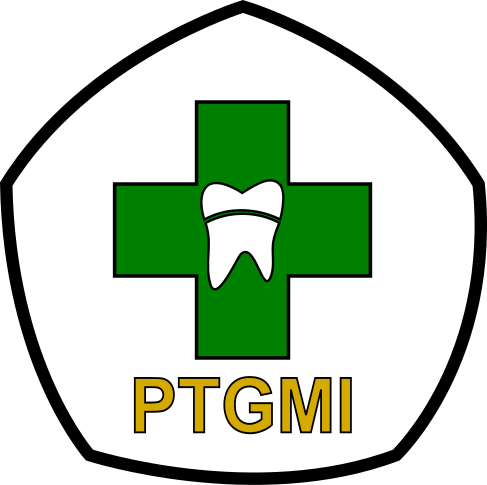UNMET NEED OF HEALTH FACILITIES IN BOGOR REGENCY
Abstract
The existence of health facilities (fasilitas kesehatan/faskes) especially at the district level is considered very appropriate to reduce the number of people whose health is impaired. For this reason, a targeted program needed to reduce this number. The program is by reducing the number of unmet needs in areas that have high population, high rate of increase and high density. This is very in accordance with the characteristics of Bogor regency as a research locus. The method used in this research is a combination method, which is a combination of tabular analysis (statistics) with spatial data. The combination of the two will produce locations with low unmet need health facilities resulting from a causality of 2 (two) variables, both of these variables are the number of residents with the number of health facilities, so that the precise and accurate results will be obtained. The conclusion from the spatial analysis is that there are 19 from 40 sub-districts in Bogor regency whose indicators of unmet need for low health facilities. Although this research is considered very simple, the results of this study are very important because it can be used as a guideline for the development of health facilities, especially community health centers (Puskesmas) in Bogor regency.
Keywords
Full Text:
PDFReferences
Arikawati, Erlina. (2016, Agustus 30). Regresi dan Korelasi. Jakarta, Jakarta, Indonesia. Retrieved from http://erlinaarikawati.blogspot.com/2016/08/regresi-dan-korelasi.
Ariyanti, L. (2017). Ketersediaan sumber daya kesehatan dan kebutuhan KB tidak terpenuhi (unmeet need): analisis tingkat provinsi. Berita Kedokteran Masyarakat, 33, 49-54.
Badan Pusat Statistik. (2018). Publikasi Statsitik Kesejahteraan Rakyat. Jakarta: Badan Pusat Statistik.
BPS Kabupaten Bogor. (2018). Daerah Dalam Angka. Bogor: Badan Pusat Statistik Kabupaten Bogor.
Fathurahman, M. (2009). Pemilihan model regresi terbaik mengunakan metode Akaike's Information Criterion. 4, 37-41.
Frost, J. (2019, Oktober 25). How to Interpret Adjusted R-Squared and Predicted R-Squared in Regression Analysis. Retrieved Oktober 25, 2019, from Statistics By Jim: https://statisticsbyjim.com/regression/interpret-adjusted-r-squared-predicted-r-squared-regression/
Hwang, J. (2018, July 16). Understanding reasons for unmet health care needs in Korea: what are health policy implications? BMC Health Services Research, 557.
Kementerian Kesehatan. (2015). Rasio dan Jumlah Puskesmas di Indonesia. Jakarta: Kementrian Kesehatan.
Masseria, S. A. (2009, November 19). Unmet need as an indicator of health care access. EuroHealth, 7-9.
Miller, S. (2013, Mei 8). Geotagging brings new meaning to Location in scientific observations. United States of America: Sciece Scene.
N.Moore, S. H. (2011). A spatial regression analysis of the influence of topography on monthly rainfall in East Africa. 31, 1440-1456.
Nugraha, A. P. (2012). Evaluasi Pengembangan Wilayah dalam Meningkatkan Kawasan Agropolitan di Kabupaten Tabalong. Jurnal Ilmu Politik dan Pemerintahan Lokal, 1, 93-106.
OJ, L. (2016). Unmet Health Services Needs Among US Children with Developmental Disabilities Associations with Family Impact and Child Functioning. Journal of Developmental & Behavioral Pediatrics, 712-723.
Septarini, W. (2017). Distribusi Spasial Puskesmas di kota Banjarmasin. Skripsi, 1-10.
Sinharay, S. (2010). An Overview of Statistics in Education. ScienceDirect, 1-11.
Wang, W.-C. (2019). An Application of the Spatial Autocorrelation Method on the Change of Real Estate Prices in Taitung City. International Journals of Geo_information, 8, 1-20.
DOI: https://doi.org/10.31983/jrk.v9i1.5387
Article Metrics
Refbacks
- There are currently no refbacks.
Copyright (c) 2020 Jurnal Riset Kesehatan



















































